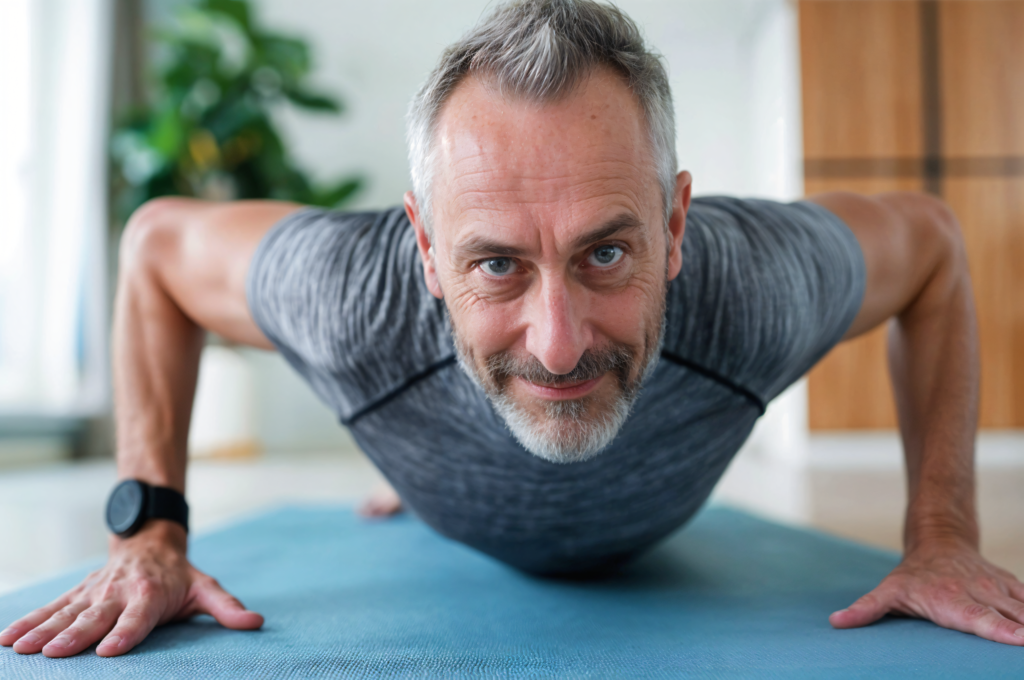A step by step guide to running for weight loss after 65
Starting your fitness journey at an older age is one of the best things that you would ever do for your body and yourself. It is very essential to exercise regularly in order to lose some weight or to maintain a good cardiovascular system and enhance your mood through walking or running. This article is designed to help those over 65 who are thinking about using running for weight loss so that they can begin with the proper information and precautions.
Factors that Make Running Effective in Weight Loss for People Above 65 Years of Age
Effective Calorie Burning
Jogging is an activity that consumes more calories that are necessary when one is seeking to lose some weight through calorie reduction. For seniors, the inclusion of running as part of their daily activities will really fast track the process of losing weight if one is on a balanced diet.

Enhances Cardiovascular Health.
It is necessary to run on a regular basis to enhance the health of the heart and boost blood circulation; this helps to avoid heart complications which are common with the elderly. Cardiovascular health is also enhanced and this implies that one is able to work harder and longer in his/her daily activities.
Helps in Maintaining the Muscle and Bone Mass of the Body.
Some of the activities that are beneficial to the body include weight-bearing exercises such as running which help in retaining muscle and bone mass which tends to reduced as one ages. This preservation is important in regard of mobility especially balance and to prevent osteoporosis and fractures.
Boosts Mental Well-being
They also trigger the release of endorphins that are known as the “feel good” hormones that help in fighting stress and enhancing the moods. It can also improve the cognitive activity and give you a clear mind that is quite helpful in your senior age.
Getting Started: The next step in the process is goal setting and here we mean setting realistic goals.
Consult Your Healthcare Provider
It is advised however that before one begins any new exercise regime, he or she should consult his or her doctor. They can evaluate your current state of health, talk about past or present diseases and give you an individual plan on how to begin safely.
The General Approach is to begin Slow and then Progress Gradually
First you should start with walking fast as a way of preparing your body. Start with short bouts of running. For instance, one can do a series of 1minute of run followed by 3 minutes of walking for about 20-30 minutes.
Always Ensure You Set SMART Goals
Set sharp and realistic objectives for example exercising for five minutes non-stop or competing in a 5km marathon. It is very useful to set goals and objectives to be achieved in the course of the project as it helps in boosting the morale and gives one a feeling that he/she has accomplished something in the process.
Running and Tips to Consider
Focus on Proper Form
Posture: Be sure to stand up straight with your back straight and your head upright and your shoulders should be relaxed.
Stride: To decrease the pressure on your joints move in a manner that you take smaller steps but more often.
Footstrike: Move gently and land on the central part of your foot and then shift the pressure forward to use your toes.
Breathing Techniques
Take slow, deep and regular breaths in order to ensure that as much oxygen as possible is being supplied to the body. Breathe in through your nose and breathe out through your mouth, to the beat of the steps that you are taking.
Listen to Your Body
Take note of what your body is telling you while you are running and after that. Some of the symptoms that are expected include fatigue, soreness, and mild discomfort, but if there is sharp pain then it is advisable to take a break.
How to develop a good and a sustainable running schedule
Frequency and Duration
Week 1 – 2: Exercise including running and walking should be done three times a week with each session lasting 20 minutes.
Week 3-4: Increase to 25 minutes, increase the running intervals.
Week 5+: Gradually increase to 30 minutes with the view of practicing longer running time.
Incorporate Rest Days
It is recommended that you have a day of rest between successive days of running to give your muscles some time to recuperate to avoid overworking the muscles and in turn, incurring injuries.
Mix in Other Activities
Some of the recommended activities for non running days are swimming, cycling among others in order to increase your fitness levels without necessarily putting stress on your joints.
Nutrition and Hydration Tips
Balanced Diet for Energy
Carbohydrates: Eat before your runs to give you energy. Therefore, one should take whole grain products, fruits and vegetables.
Protein: It is also important in the repair of muscle tissues. Among the foods that you should include, there should be lean meats, fish, beans, and nuts.
Healthy Fats: Promote the general well-being. Include foods that are high in good fat such as avocados, olive oil and flaxseed.
Stay Hydrated
Dehydration is a condition that affects older people more frequently. Hydrate yourself by drinking water, and it may be useful to have a bottle of water whilst running.
Timing Your Meals
It is advisable to take a small meal especially one that has carbohydrates but low in fiber one hour prior to the time you will be running.
Measures Which Need to Be Taken in Order to Avoid Injuries
Proper Warm-Up and Cool-Down
Warm-Up: Begin with 5-10 minutes of walking or active stretching for the muscles in your body.
Cool-Down: Finally, do five minutes of slow walking and some static stretching for the purpose of recovery.
Here is a tip for you: Invest in the Right Gear.
Footwear: Buy good quality shoes with cushioning that is best for the feet and should be purchased from a store that deals in running attire.
Clothing: Dress in dry and comfortable clothes which should be preferably something that will wick away moisture.

Mind the Environment
Surface: This will prevent you from running on hard and bumpy terrains like the roads which may affect your joints.
Weather: Avoid extreme temperatures. During the hot weather, do the running at the cooler times of the day, for example early in the morning or late in the evening and during cold weather, one should dress appropriately.
Balance and Flexibility Exercises
Include exercises such as Tai Chi or Yoga that help in improving the balance and flexibility of the body hence minimising the risk of falling and increasing the mobility of the body.
Overcoming Common Challenges
Dealing with Joint Pain
If you experience joint discomfort, consider:If you experience joint discomfort, consider:
Low-Impact Alternatives: Replace some of your running workouts with swimming, or elliptical training.
Supplements: You should also be able to talk with your doctor about other products you can take like glucosamine and chondroitin.
Staying Motivated
Social Support: You should join a local running group or seek for a partner who also loves to go for a run.
Variety: It is advisable to switch the running routes as this makes the whole experience exciting.
Track Progress: Keep a record by writing on a journal or even using an application.
Managing Health Conditions
Chronic Conditions: It is therefore important to discuss your plans with your doctor in details in order to come up with the right one.
Medications: Know the effects that your medications may have on your ability to exercise.
When to Look for Help.
Personal Trainers
It is advisable to work with a trainer who is conversant with elderly clients to avoid practising wrong forms of exercise and to get tailored programs.
Physical Therapists
If you have certain type of ailments or injuries, a physiotherapist can provide you with certain exercises to make certain muscle groups stronger and not prone to injuries.
Conclusion
It is never too late to begin a running program and getting started after the age of 65 is a smart decision for health and weight loss. Having learnt all these, you should be in a position to set achievable goals, avoid accidents and listen to your body since running is not only useful but also fun. Just to reiterate, it’s never too late to start making changes in order to become more active. So put on your jogging shoes, start walking and begin a new chapter in your life to a healthier life.
It is advisable that you seek the services of your doctor before undertaking any other exercise regimen to check on your health status.





